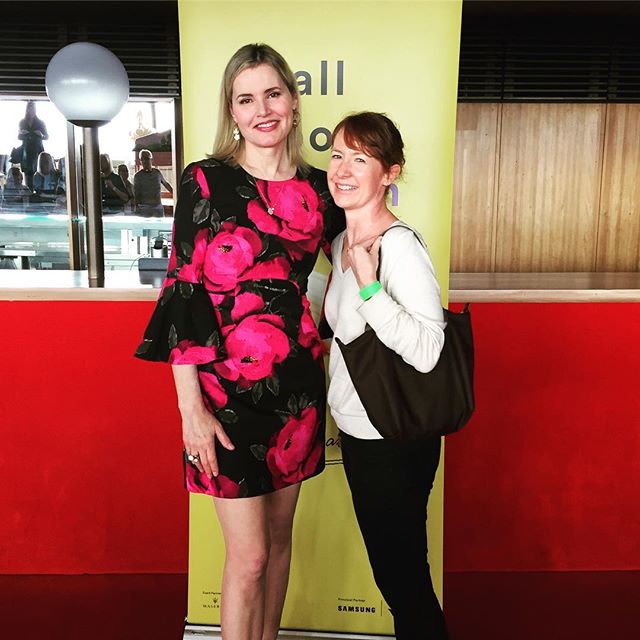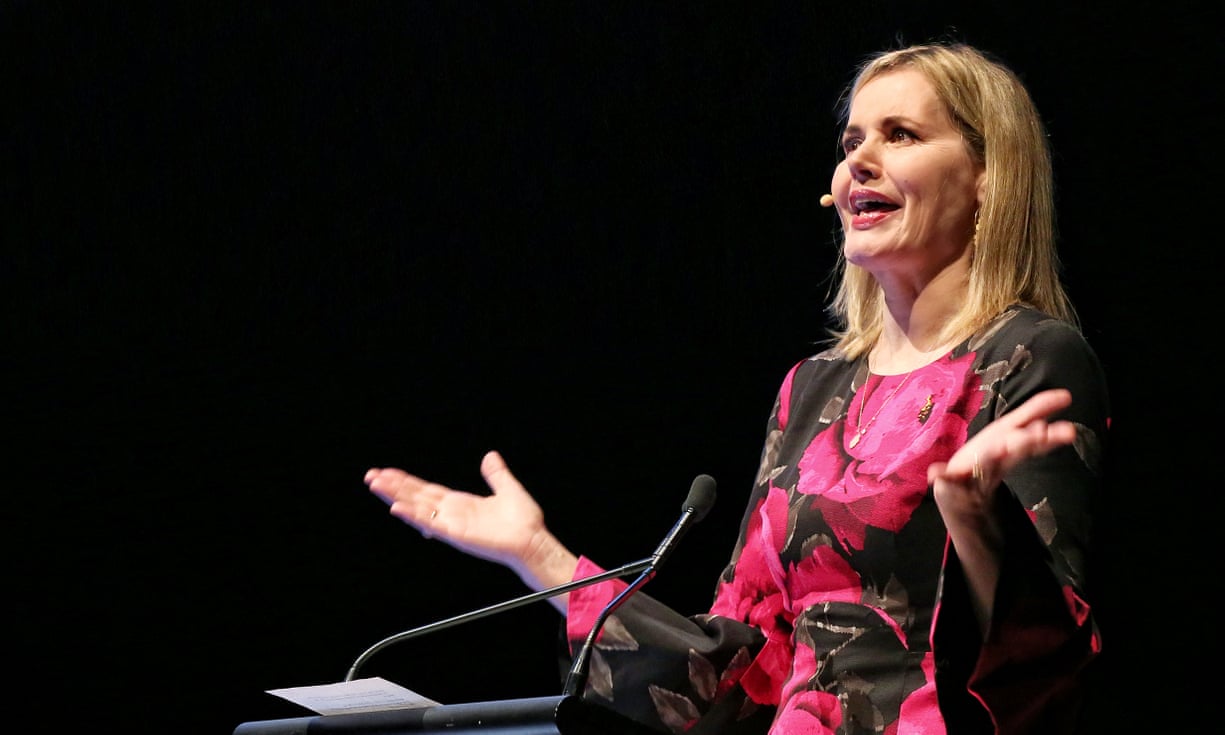The Oscar winner has spent a decade commissioning research to track representation – but a lot still needs to be done
If there’s one place that gender parity could happen overnight, it’s within the worlds depicted on screen.
So says actor Geena Davis, who gave a rousing speech about women in media at the opening session of All About Women at Sydney Opera House on Sunday. “Media can be the cure for the problem it has created,” she said.
After the Oscar winner was welcomed to the stage, she joked she was there to talk about how to become a movie star. Her answer was brief: star in lots of successful films.
The gag got her a laugh, but it was a neat way of saying that although Davis is well known for her roles in films like Beetlejuice, The Fly, Stuart Little, A League of Their own, and that Academy Award-winning turn in The Accidental Tourist, her work is about much more than that.
Indeed Davis is something of an overachiever: she’s also a member of Mensa,an Olympic archer, a special envoy for women and girls in tech for the United Nations, and a mother of three.
And she’s becoming increasingly recognised for the work she does with her foundation See Jane, the Geena Davis Institute on Gender in Media, which she launched in 2007 and which brought her to the Australian festival on the weekend.
Her speech was warm, witty and uplifting – but it didn’t pull any punches. She shared the story about being the tallest kid in school, with her fondest wish “to take up less space”. Only when the six-foot-tall actor was 36, starring in A League of Their Own and finally appreciative of her own athletic ability, did she feel good about her body.
She also spoke about the lengths she went to to win her Academy Award-nominated role in Ridley Scott’s Thelma & Louise, the 1991 movie that she said “changed” her life. When the film was released, to overwhelming response, it made her realise just how few opportunities there were to see empowered female characters on screen, and it inspired her to found the institute.
There are far fewer women in the workforce in the fictional world – where they make it up
Geena Davis
Davis said throughout her career she’d consciously chosen roles that empowered women and girls. She acknowledged that this was a luxury because she “hasn’t run out of money yet”, and added that if she ever appears as Sean Connery’s comatose wife – “about right, by Hollywood standards” – we should realise she’s broke.
It was when her now 14-year-old daughter was a toddler, and she started watching movies with her, that she realised how woeful the depictions of women in family movies really were.
She was particularly struck by just how few speaking characters in these films were female. She took this point to industry colleagues, but most denied it. Well-meaning and sincere, they couldn’t see a problem.
Davis pressed on – she wanted to see the numbers. So in 2008 she sponsored the largest study carried out on gender depictions in family-rated films and children’s television over the past 20 years, and found that for every female speaking-character, there were 2.5 or three male characters – a figure unchanged since 1946.
Furthermore the vast majority of those female characters were stereotypical or highly sexualised, with ambitions largely related to romance. Even crowd scenes were only made up of 17% women – a fact she jokingly attributed to her theory that perhaps screenwriters don’t think women like to gather.

In 2005, Davis played the first female US president on TV, in the short-lived drama Commander In Chief. She told the audience she was delighted to accept the role, seeing it as the culmination of her mission to play empowering female roles, not least because she knew the female participation in government in the US hovered – and continues to hover – at about 19%.
She told the audience that number kept jumping out at her in her research: numbers for women in Congress, media, print journalism, engineering, law, the military and more all fall below 20% participation. It seemed an uneasy coincidence that the number of female characters in family movies were also around the same mark.
“What if we are inculcating generation after generation to believe that low representation of women is the norm?” she asked her audience.
So her institute commissioned more research: this time, a global study of gender in film in the 10 biggest film markets (including Australia) in the world. The findings were “bleak”, she said: of those characters seen to be holding a job, 77.5% were male and 22.5% were female. Women in leadership and science, technology, engineering and maths (Stem) fields were dramatically underrepresented in film, she said, and of the 127 characters that held political office, only 12 were women. As she put it: “There are far fewer women in the workforce in the fictional world – where they make it up!”
This lack of onscreen depiction contributes to symbolic annihilation, she said, by which those that don’t see themselves reflected on screen believe they are unimportant. She quoted damning statistics that show the more hours of television a girl watches, the fewer options she thinks she has in life. Yet when women are depicted on screen in Stem roles, it was a different story, she said, pointing to the dramatic increase in the number of women wanting to study forensic science, thanks in part to the roles played by women in shows like Bones, NCIS and CSI.
When she took these numbers to studio executives, she said they were horrified, with many vowing to do better. And while there is some way to go, it seems to have had an impact: in follow-up research, 68% said they had changed two or more of their projects; while 41% changed four or more. In fact, after hearing about the research director Mark Osmond made the lead character in his animated film, the Little Prince, female.
Davis was confident that there would be further progress in screen representations in the next five to 10 years, because there was a willingness to make change. Making the change behind the camera however would not be as easy. Research has shown that in the US, there are 4.8 males working behind the scenes for every female, with similar figures in Australia, where a disproportionately low number of women are employed by the industry. Where gender bias in family features is unconscious, gender bias behind the camera is conscious. “They have known for years that it’s unbalanced,” she said.
She pointed to Glee and American Horror Story director/producer Ryan Murphy who set up the Half foundation in 2016, to have 50% representation both in front of and behind the cameras on all his productions. “That is when change will happen,” Davis said.
Finally, to the audience poised for a standing ovation, she said all sectors needed more women to help achieve equality: “On screen, add women; behind the camera, add women; in media, add women; in law and on corporate boards, add women.”
First published in Guardian Australia on 6 March 2017 as How Geena Davis became a champion for women on screen
More stories like this



